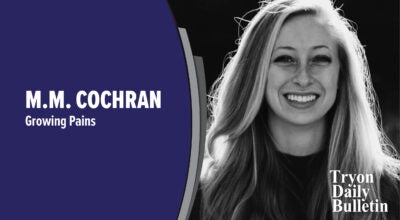Warning signs of a TIA or “Ministroke”
Published 9:58 am Wednesday, September 15, 2021
Senior Lifestyles
In a recent article I discussed the differences between a stroke and a Transient Ischemic Attack, a TIA or “mini-stroke.” One major difference is that a TIA is typically a brief event without long-lasting symptoms, and usually results in a return to full previous functionality within 24 hours.
Both a full-blown stroke and a TIA are “brain attacks’ caused by the same factors and have the same symptoms as noted in the acronym BEFAST. B: Sudden loss of balance or coordination & dizziness; E: Eyes suffer a sudden loss of vision out of one or both eyes; F: Face drooping, with one side of the face drooping or feeling numb; A: Arm weakness or numbness on one side of the body; S: Speech may become slurred or difficult to understand; T: Time to immediately call 911.
As with a stroke, a TIA is the result of an interruption of blood flow to the brain usually due to a blockage in a blood vessel in the brain that causes a hemorrhagic event or rupture and blood leaks into the brain. This lack of oxygen from the blood causes brain cells to “starve” and die leaving the patient with a loss of function depending on which part of the brain suffered the cell death.
With a TIA, the blockage of a blood vessel in the brain is temporary, causing short-lived symptoms until the blockage clears on its own, thereby not causing permanent brain injury. However, a TIA can be, and often is a precursor to a full-blown stroke. Statistics from the America Stroke Association show that TIAs occur before 12% of full strokes, and between 9%-17% of people who have a TIA will suffer a full-blown stroke within 90 days.
The fact is that anyone can suffer a TIA or stroke, but lifestyle and risk factors matter and typically increase with age. Typical risk factors for a “brain attack” include diabetes, cardiovascular diseases like heart disease, heart valve problems and heart failure, a history of a previous stroke or heart attack, smoking and blood clots.
Not surprisingly, the steps to reduce and prevent a TIA are identical to the steps you take to prevent almost all health-related issues. These are: stop smoking, eat a healthy diet such as the foods named in the Mediterranean Diet with little red meat or processed foods, get regular exercise, cut back on sugary foods and drinks, reduce alcohol consumption and have your cholesterol numbers and blood pressure checked at least once a year, often at the same time as your annual physical with your primary care physician.
It’s important to know the signs and symptoms of a TIA or Stroke. If you or a loved one think that you or they are having a stroke, time matters. There is a “Golden Hour” during which clot-busting drugs can prevent or greatly mitigate brain damage and loss of function, so getting to a hospital is a critical first step to saving functionality or possibly saving a life. Emergency medical services and 911 honestly prefer that you call and err on the side of caution rather than waiting out an event until it not only gets worse but extends past the time measures could have been taken to reverse the damage done by the TIA or stroke. Calling 911 in these cases is truly a situation of better safe than sorry.
Ron Kauffman is a Consultant & Expert Speaker on Issues of Aging. Contact him at 828-696-9799 or by email at: drron561@gmail.com.





